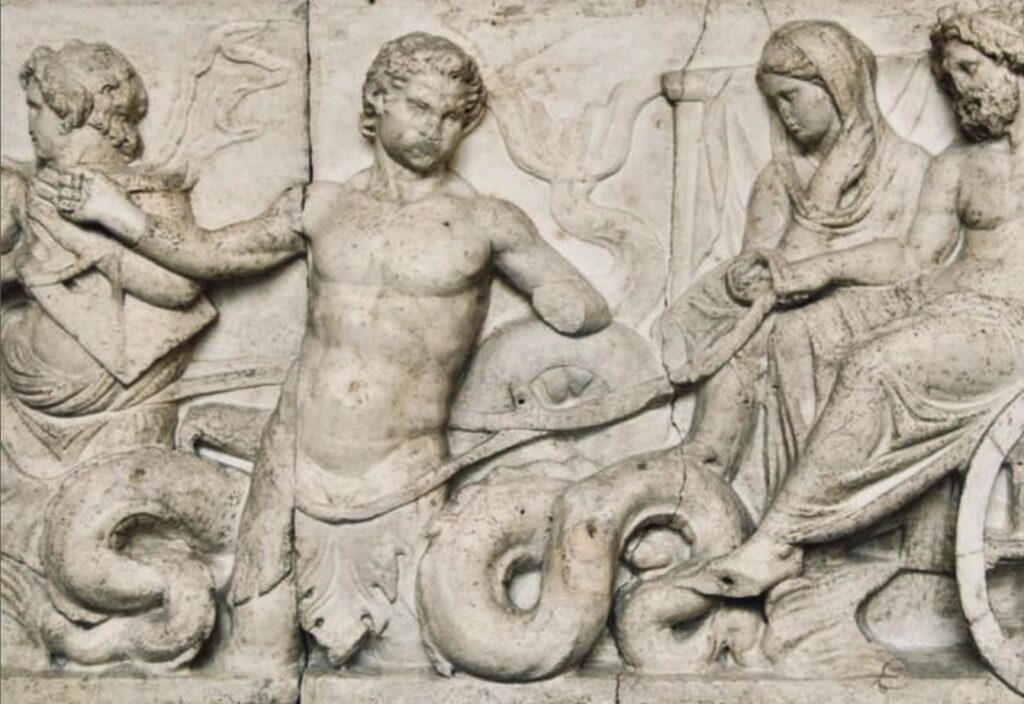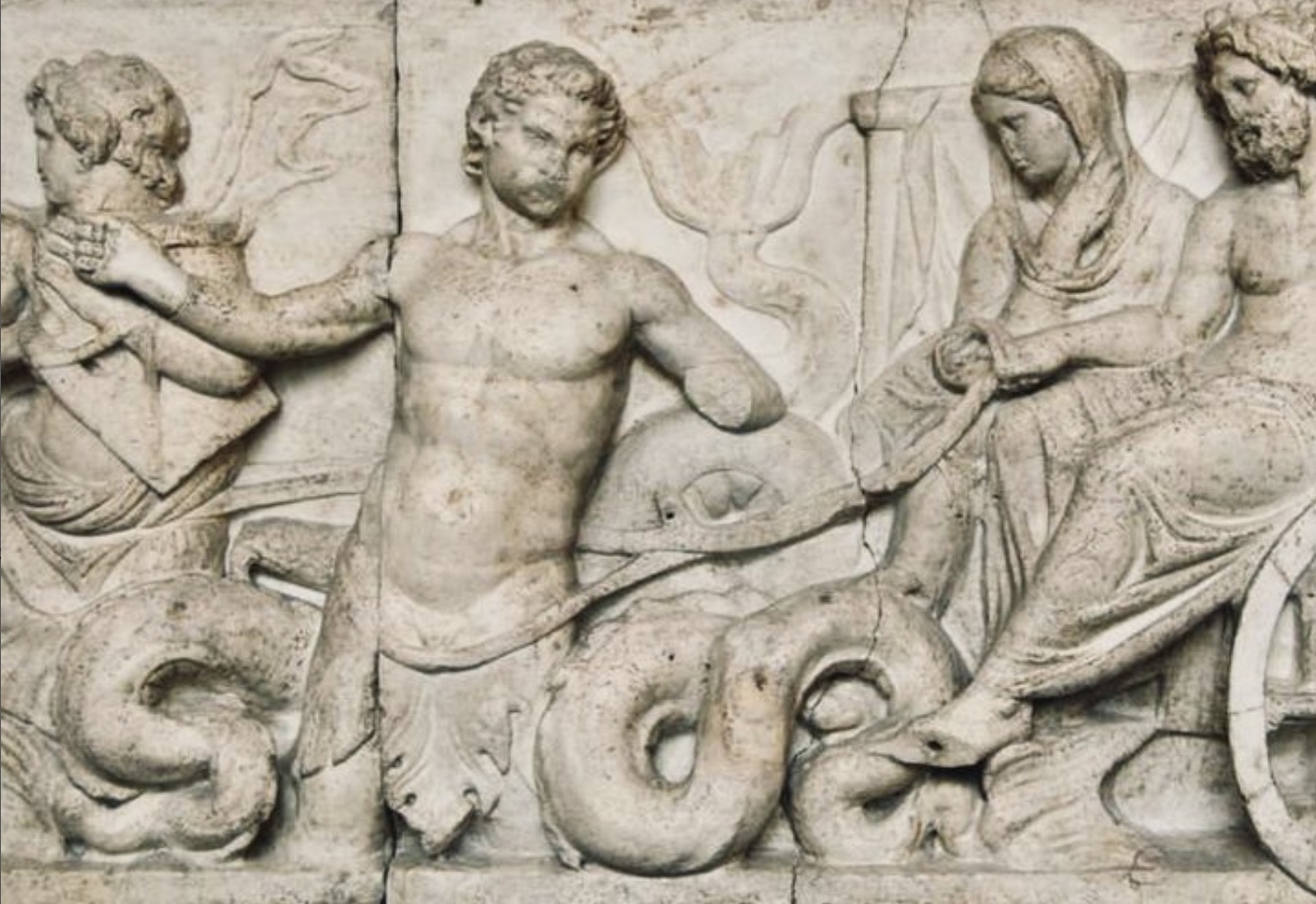I’ve been thinking about tritons lately, those marine hybrid creatures that so delightfully combine manly torsos with elaborate fishy tails. The essential flexibility of these imaginary bodies is their best selling point and their popularity flourished in the late Hellenistic period – bounded not by corporeal limits, only artistic flair.
Their dramatic inclusion in sculptural groups was eminently flexible, too: providing sexy, decorative rides for nereids, or commemorating naval dominion, or an ambiguous mixture of both. These fellows were occasionally amphibious, emerging from the sea to partake in battles or blow shell-trumpets, and in these instances their tails could become split and serpentine, enabling nimble movement on shore or surfing upon roiling cresting waves.

Shown is the central scene of the famous marine thiasos (the jolly procession of Poseidon’s entourage) showing a triton in split-tail surfing mode (angled towards us to best display his bodacious human bits), blowing on a now missing conch shell trumpet, and trussed up to pull the nuptial chariot of Poseidon and his bride Amphitrite.
Now in Munich, the relief is one-fourth of one of the more enigmatic monuments from Late Republican Rome, the so-called ‘Altar of Domitius Ahenobarbus.’ Likely serving as a base for cult statues in an early manurial temple, the other three sides are relentlessly Roman in subject and sensibility (perhaps showing a census) – it’s a strange but effective show of Roman military might and sensibilities.
This mythological panel was very likely brought back to Rome as war-booty, looted from the Eastern Mediterranean during Ahenobarbus’ successful campaign there. Poseidon’s (now Neptune’s) marriage still celebrated, his Triton now pressed into service, announcing with his trumpet the arrival of Roman dominion…




